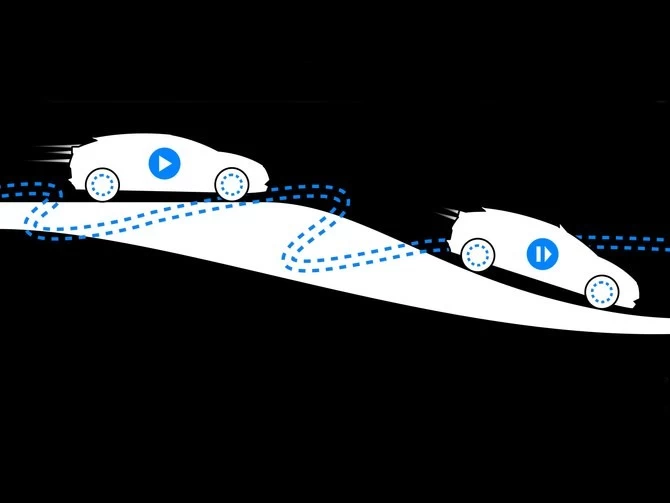Look, there's no brakes! You're going to drive an electric car with one foot
chinatopwin
chinatopwin
2017-07-25 09:32:07
With the production of tesla's mass-market Model 3 and its first delivery on Friday, electric cars
will be mainstream. For driving electric cars, which means that a series of change: charging at
night rather than go to a gasoline station, staring at the battery table instead of oil, the most
important is, their driving mode has changed.

It's a habit. It takes some habits. At first, it would feel that the parking brake was accidentally left
To get the most out of driving an electric car, the accelerator (you can't call it a gas pedal!).
Control the acceleration and deceleration. Press the pedals, as usual, but lift your feet and make
the car slow down, hard, not the coast.

It's a habit. It takes some habits. At first, it would feel that the parking brake was accidentally left
in the car. But most drivers end up liking it more because it allows you to move slowly in traffic,
much easier than switching back and forth between pedals.
In traditional cars, the brake pads are clamped on metal plates, and friction converts the kinetic
energy of a speeding car into waste heat. But when electric cars slow down, electric motors run
like generators, restoring previously wasted energy to recharge the batteries. According to the
software engineer in the design of the car when allowed by the regeneration ability, the strength
can be strong enough to let the car slow down to zero, which means that the driver use the brake
pedal will completely stop.
Later this year, nissan will be the first carmaker to launch a full pedal drive on the latest
Later this year, nissan will be the first carmaker to launch a full pedal drive on the latest
generation of electric Leaf. It will have an "electronic pedal" option. The pedal will still look the
same, but the brakes will be superfluous, and computer control will give the traditional
accelerators extra functionality. Taking off will not only slow down the car, it will stop the car, and
can even pull a car without rolling back on the hillside. This means that when the driver raises his
foot from the gas pedal, the computer in the new leaf will control and start the friction brake.
"I think it's the logical next step," said Jeffrey miller, an engineering professor at the university of
southern California. In tesla, car owners have been able to pinpoint the speed of the accelerator
on a giant touchscreen. In Chevrolet Bolt, the driver behind the steering wheel with a paddle, to
ask for extra regeneration, as they will use a automatic transmission to slow and slow movement,
but both can slow down through regenerative braking, and not to stop.
According to nissan, the new Leaf driver will never need the brake pedal, although it is still there
because of the "aggressive braking conditions". (in other words, the panic will stop.)
The advantages of maximum braking are enormous. Maintenance costs are low because the
The advantages of maximum braking are enormous. Maintenance costs are low because the
used brake pads can be maintained for thousands of miles. Less dust particles produce polluted
air and waterways. The parking distance is also shorter, because when the driver starts to start
the gas pedal, the car starts to slow down, not when he moves his foot to the other pedal.
Most importantly, energy is being recaptured rather than wasted, so the mileage of electric cars
has improved. (a tesla engineer described the sports car's experimental braking system in 2007
and calculated that it would be about 65 to 5 percent efficient when retaking energy.)
Regenerative braking does mean that electric car owners need to be more careful on slippery
Regenerative braking does mean that electric car owners need to be more careful on slippery
surfaces, because the car's deceleration can lead to skidding. For drivers, learn to relax the gas
pedal instead of putting your right foot on the brakes, which means forgetting for years to expect a
car.
The concept is not new. The engineers experimented with the reagan-style brakes in the earliest
The concept is not new. The engineers experimented with the reagan-style brakes in the earliest
carriages of a horse-drawn carriage, which were widely used in electric trains. Electric cars,
however, the increase of the number will make the situation more common, this means that the
modern generation of drivers will have to forget about their understanding of the pedals, and learn
a new way of parking.











